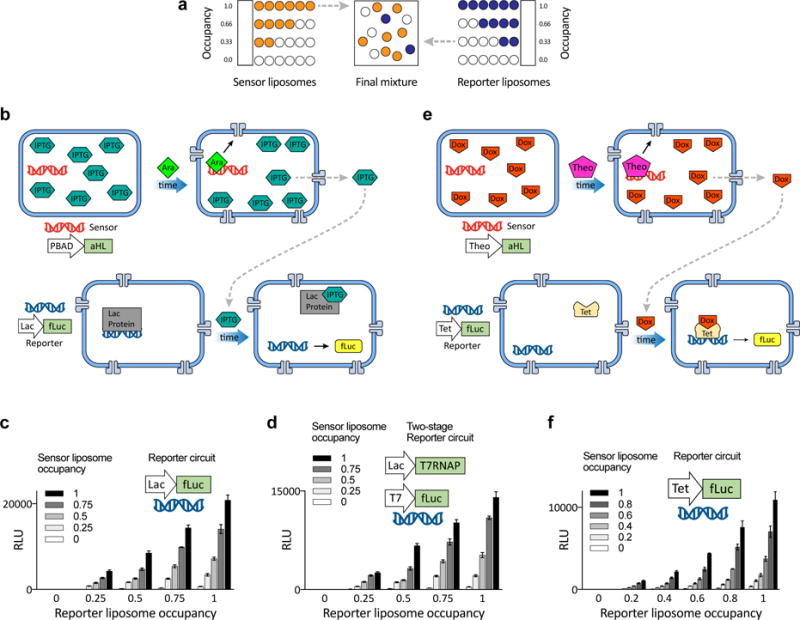Fig. 5. Communication between genetic circuits operating in multiple liposome populations.

a. Scheme for mixing two populations of liposomes at different ratios of their components while maintaining a constant lipid concentration of 10 mM (the same scheme was used throughout this figure and Fig. 6). Each population contains the same amount of liposomes, but the liposome occupancy can vary between 0 (all liposomes are empty) and 1 (the maximum fraction of the liposomes contain reagents). b–d. Externally activated two-part circuits, with bacterial TX/TL. b. Scheme of interacting populations, denoted sensor and reporter. Sensor liposomes contain the alpha-hemolysin gene and are filled with IPTG; reporter liposomes contain machinery for firefly luciferase expression. During activation, arabinose (Ara) diffuses through the sensor liposome membrane and induces aHL expression, which releases IPTG, which induces fLuc expression in the reporter. c. Expression of fLuc for varying ratios of occupancy (as in a), for the sensor and reporter liposomes with indicated contents. This panel represents the time point 6h (for complete time series see Fig. S14). For this circuit without arabinose see Fig. S15. d. Expression of fLuc for a circuit in which the reporter liposomes contain DNA for a multicomponent genetic cascade, as indicated. This panel represents the 6h time point (for complete time series, see Fig. S16. For this circuit without arabinose, see Fig. S17). e–f. Externally activated two-part circuits, containing both bacterial and mammalian TX/TL components. e. Sensor vesicles contain the Theo-triggered aHL gene and Dox; reporter liposomes contain constitutively expressed aHL and Tet, and Dox/Tet-driven fLuc. During activation, Theo diffuses through the membrane of the activator liposomes and induces aHL expression, which creates pores that release Dox from the activator. Dox induces fLuc expression in the reporter liposomes. f. Expression of fLuc, for varying ratios of sensor and reporter liposomes (this panel represents 6h time point; for complete time series see Fig. S18. For this circuit without Theo, see Fig. S19). Error bars indicate S. E. M. n=4 replicates.
